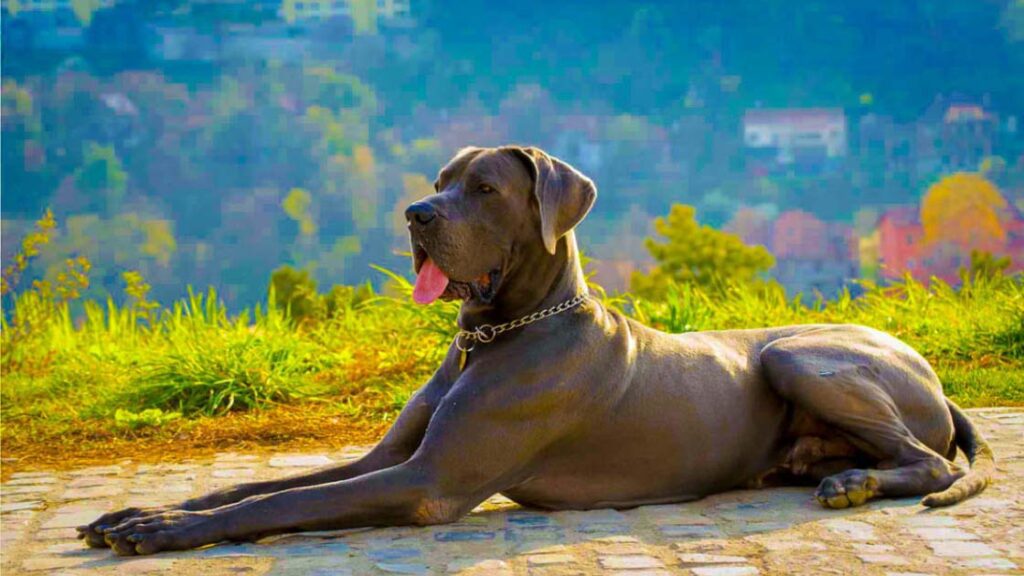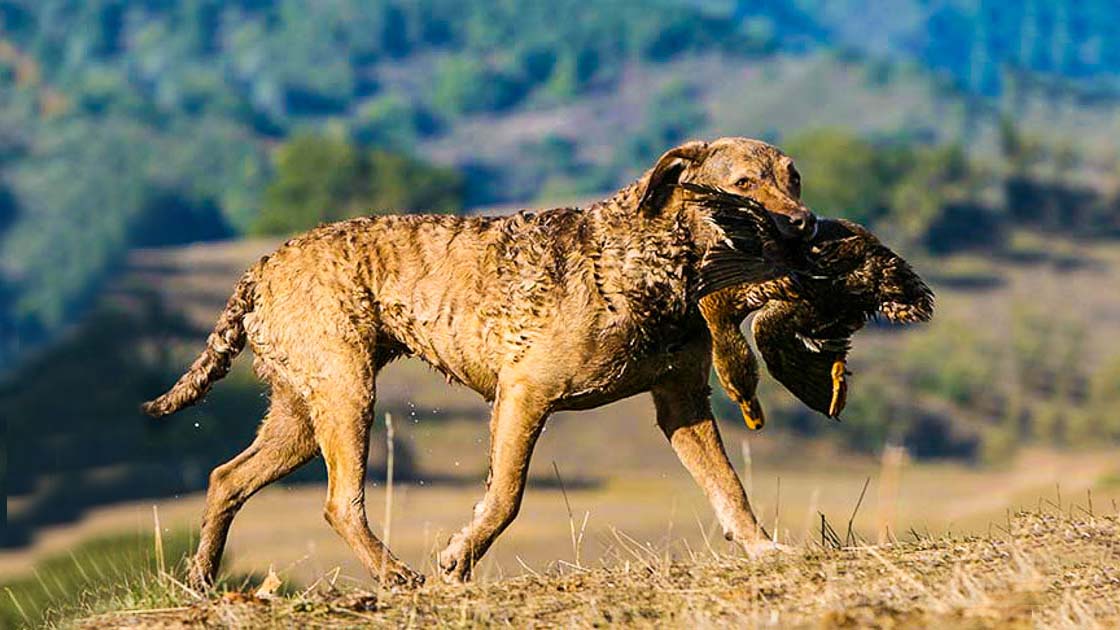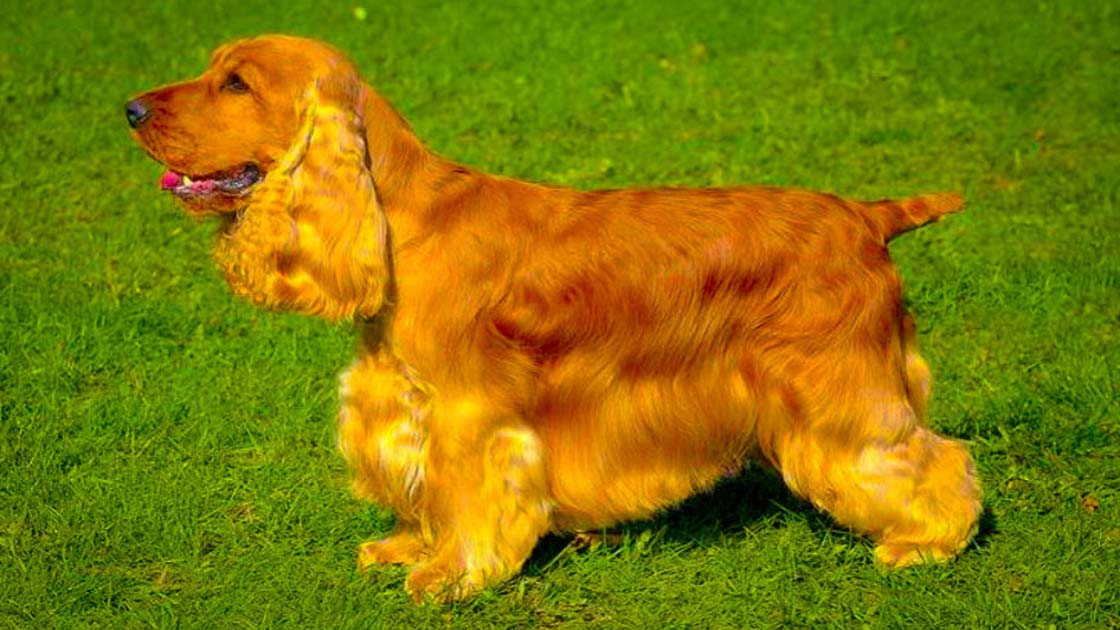Great Dane
Origin: Germany
Popularity Rank: 15 Since 2020
Life Span: 7-10 years
Color: The primary colors of Great Dane dog are pure steel blue, brindle, grey, and black and white.
Size: Great Dane size is giant
Height: The Great Dane height of Males dog breed is 30-34 inches (76-86 cm) and Female height is 28-32 inches (71-81 cm)
Breed Group: The Great Dane dog belongs to a working group.
Great Dane Price: Its Price ranges from $1000 – $2000 USD.
Weight: The Great Dane weight of males is 140 to 175 pounds, and females’ weight is 110 to 140 pounds.
Great Dane Dog History
The Great Dane is also called a Boarhound dog or Deutsche Dogge. Old-fashioned Great Danes are called the “Apollo of all dogs.” Greek coins dating back to 36 B.C. show Great Dane-like dogs on them. These dogs are also seen on Egyptian monuments that date to around 3000 B.C. Chinese literature from 1121 B.C. contains the earliest examples of Great Dane-sounding canines.
An Asian people known as the Alans invaded German Gaul and portions of Italy and Spain in 407 A.D. with their formidable mastiff-like dogs. They were admired for their success in taking down bears and wild boar. The Great Dane is a domestic dog of the mastiff-sighthound breed that was produced before the Christian era, and they are notable for their size.
Moreover, the Great Dane is descended from hunting dogs employed to guard German nobility during the Middle Ages by hunting deer and wild boar. However, one of the giant breeds in the world is the Irish wolfhound. They were employed both as estate security dogs and as hunters. In 1887, the Great Dane was identified. The Great Dane is skilled at tracking, serving as a watchdog, and carting.
Great Dane Dog Qualities
The biggest Great Dane canines’ ears are still cropped in German. The Great Dane’s enormous and intimidating exterior belies its friendly nature. They are frequently described as “gentle giants” and are known to like receiving one-on-one time from their owners.
When hunting traditions changed, notably with the development of firearms, many of the involved dog breeds disappeared. In addition, they are either luxury or hobby dogs. Moreover, these dogs are peaceful, self-possessed, and calm.
In addition, The Great Dane is a friendly dog frequently called a “gentle giant.” It is endearing, tender, fun and understanding among kids. It needs to be around people and like everyone. The Great Dane does not bark frequently and only acts aggressively when necessary. It is dependable, trustworthy, and trustworthy. It is a good watchdog since it is brave and devoted.
Great Danes Types: Harlequin Great Dane, black Great Dane, merle Great Dane, blue Great Dane, blue merle Great Dane, Brown Great Dane, and mantle Great Dane.
Great Dane Puppies
Large paws and floppy ears on Great Dane puppies make them exceptionally adorable and intriguing. Despite starting out little, they have a remarkable capacity for development and strength. Because of their mild and sensitive temperament, these puppies frequently seek for intimate interaction with their human families. Although they might initially seem a little awkward, they gradually learn to move through their environment with style and grace. Great Dane puppies are intelligent and curious, which makes them keen trainees. As they get older, they grow into majestic, devoted giants who represent grace and affection.
Great Dane Dog Body
The head of Great Dane dogs is prolonged, elevated, and flat-looking. The lines on the forehead and nose are parallel, and the lines on the skull are squarish and neat. They have a large chest deep in the front and a long, muscular neck that is slightly arched. Their bodies are long, croup short, and slightly arched in the loin. Besides, their tails are well-tapered and medium in length. They have lengthy, well-muscled, well-let down, and somewhat curved hindquarters.
Furthermore, their feet have closed toes and a high arch like cat feet. Their body color is white, and they have dark eyes and toenails. On blue Danes, the nose is black, blue/black, or black speckled on harlequins. The medium-sized, deep-set eyes are black. The medium-sized ears are clipped or left natural and positioned high. They fold forward and hang near the cheek when in their natural state.
When cropped, they are enormous compared to the rest of the head and stand upright. The high, robust, and muscular neck has a well-defined arch. The legs are precisely straight in the front. Round feet with dark toenails are seen. The tail has a high set, thicker base, and sharp point.
Coat
Great Dane dogs have silky, short, thick coats. The coat hue of these dogs is white, Brindle, fawn, black, blue, mantle, harlequin, and occasionally merle are among the available hues. The short, smooth coat of the Great Dane is close to the body. The dog has a thick, glossy coat that provides insulation and protection. Despite having a single coat, Great Danes do not shed as much as other breeds. Their skin will stay healthy, and their coat will stay in good condition with regular brushing, which also removes any loose hair.
Moreover, it is also essential to remember that Great Danes, particularly those with lighter-colored coats, may be more susceptible to sunburns. To prevent this, offer shade or use sunscreen approved for dogs when taking your dog outside. The Great Dane’s coat is generally low maintenance and needs essential grooming to keep it looking good.
Great Dane Health Issues
Like many large dog breeds, Great Danes can be prone to specific health issues. Hip dysplasia, a disorder where the hip joint does not grow properly, causes joint troubles and mobility problems, is one of the primary diseases that affect Great Danes. Another major issue with Great Danes is gastric dilatation-volvulus, or bloat, as their deep chests render them more prone to this potentially fatal illness.
Common health issues are osteosarcoma, a form of bone cancer, and dilated cardiomyopathy, a heart condition. The risk can be reduced, and the well-being of Great Danes can be promoted by regular veterinarian examinations, a balanced diet, suitable exercise, and ethical breeding practices, ensuring they live long, healthy lives.
Additionally, Great Danes may experience the following typical health issues: Prone to hip dysplasia, heart disease and tail injuries, mast cell tumors, Dilated Cardiomyopathy, Gastric Dilatation-Volvulus, Elbow hygroma, hip dysplasia, dilated cardiomyopathy, and wobbler syndrome are common diseases of Great Dane dogs.
Treatment
Careful attention is needed to ensure the well-being of Great Danes. For keeping track of their health and resolving any possible problems, routine veterinary examinations are essential. Due to their size, Great Danes are more likely to develop illnesses like hip dysplasia, bloat, heart issues, and some cancers.
Proper nutrition, exercise, and weight management are vital for them to grow and keep a healthy weight. Dental hygiene, such as frequent tooth cleaning, aids in the prevention of dental disease. Great Dane owners may ensure their cherished pets enjoy long and healthy lives by offering comprehensive healthcare.
For More Details Contact Us [icon name=”square-phone” prefix=”fas”]







